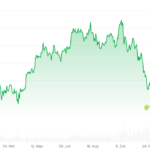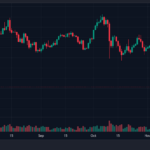- Circle has partnered with Mastercard and Finastra to integrate its stablecoins, USDC and EURC, into traditional financial systems for cross-border payments and settlements.
- The collaboration with Mastercard will enable merchants in Eastern Europe, the Middle East, and Africa to settle in USDC, while the Finastra deal will let banks in 50 jurisdictions settle payments in USDC.
- These integrations follow Circle’s public listing on the NYSE and the passage of the GENIUS Act, which provided a new federal regulatory framework for stablecoins in the US.
Stablecoin giant Circle is pushing stablecoins deeper into the financial system with two fresh integrations. The company disclosed arrangements with Mastercard and Finastra designed to move USDC beyond crypto rails and into everyday banking and commerce.
Mastercard will open settlements in USDC and EURC for acquirers and merchants across Eastern Europe, the Middle East, and Africa, and the first regional players to participate will be the Arab Financial Services and Eazy Financial Services.
In parallel, London-based software vendor Finastra has wired USDC into its Global PAYplus system, a core payments engine said to clear more than US$5T (AU$7.6T) in cross-border flows each day. With the upgrade, banks in 50 jurisdictions can settle obligations directly in USDC while still transmitting payment instructions in conventional fiat.
Related: Trump Media Partners With Crypto.com, Launches US$1B CRO Strategy Vehicle
Circle’s Regulatory Experience
Circle’s integration deals with Mastercard and Finastra are tied directly to its IPO and the new US regulatory regime for stablecoins.
The company listed on the NYSE in June 2025 under the ticker CRCL, raising US$1.2B (AU$1.82B). Shares opened at US$69 (AU$105) and closed the first session at US$83.23 (AU$126). Today, those shares are traded at US$130.9, a 2.8% increase from yesterday, according to Google Finance.
Circle’s first earnings report as a public company showed revenue of US$658M (AU$1.01B), with USDC circulation up 90 % year-on-year to US$61.3 billion (AU$93.1B).
Regulation arrived weeks later. The GENIUS Act, signed into law in July, created the first federal framework for stablecoins, mandating 1:1 reserves in low-risk assets, regular audits, transparency, and full anti-money laundering (AML) compliance.
It essentially cleared the way for large financial firms to incorporate stablecoin rails into existing systems by removing ambiguity, but also placing issuers like Circle under direct federal supervision.
Related: Gemini Tops Coinbase in App Charts After Launching XRP Rewards Card
The post Circle Teams Up with Mastercard and Finastra to Push Stablecoin Settlements Global appeared first on Crypto News Australia.




